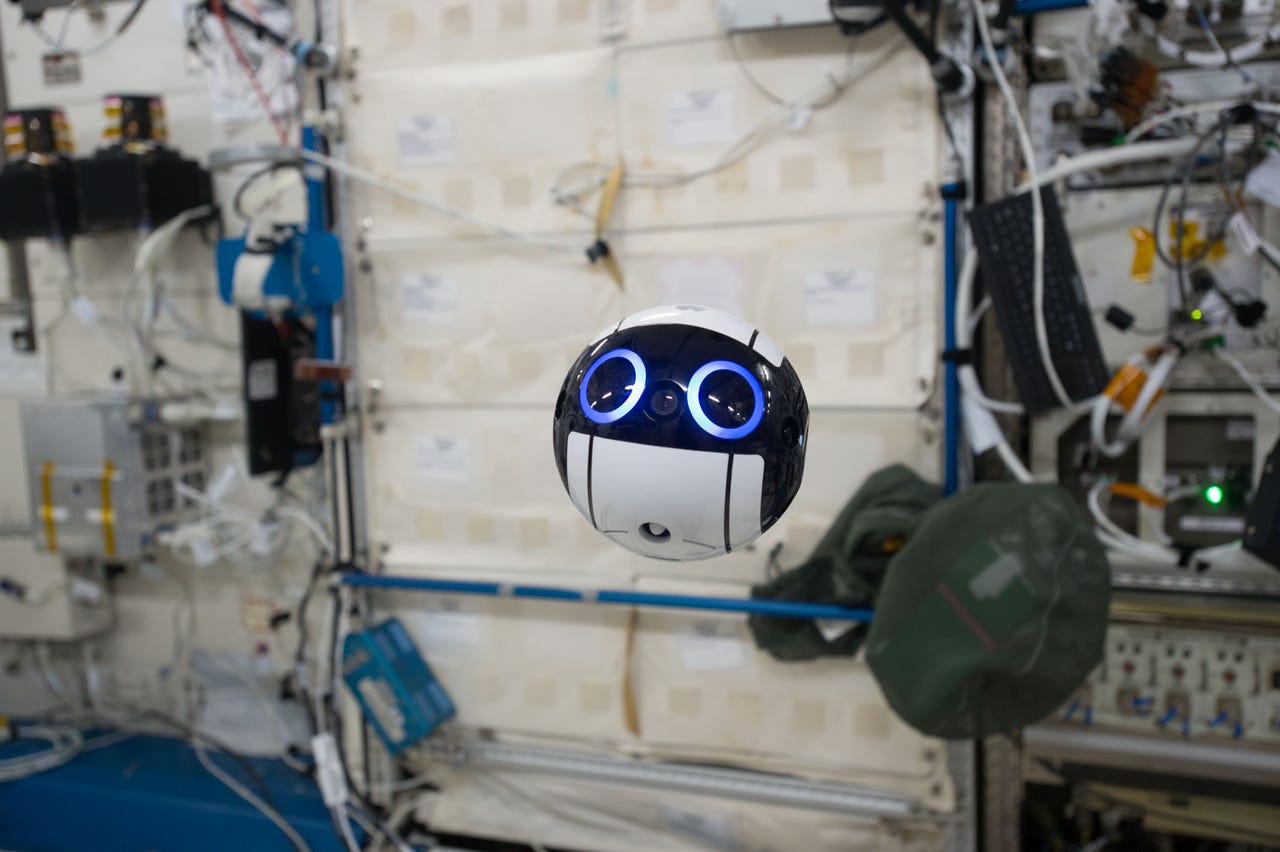Int-Ball, Japan's mini BB-8, is now operational on the International Space Station


Int-Ball (Image: JAXA/NASA)
In Star Wars: The Force Awakens, BB-8 is a spherical robot (a "droid" in actually trademarked Lucasfilm-speak).
Beyond the delightful puppeteering of the droid, what makes BB-8 compelling is the physical design that allows a head-like upper section to move independently and without mechanical connection to the lower, completely round body.
As I showed in my Father's Day roundup last month, toy makers have duplicated BB-8's movement using magnets to keep the head on top.
While the round form serves as a sort of omni-directional wheel in Star Wars, a real round bot is finally operational on the International Space Station (ISS). Dubbed the "Int-Ball" (for JEM Internal Ball Camera), the little drone is the creation of the Japan Aerospace Exploration Agency (JAXA).
Kibo (Image: JAXA/NASA)
JAXA operates the Japanese Experimental Module (JEM) on the ISS. The module has the nickname "Kibo," a word meaning "hope" in Japanese. Kibo can support up to four astronauts and is Japan's first "human-rated" space facility. The goal of the module is to support scientific research and a variety of experiments, one of which is the little Int-Ball.
Int-Ball hands-on (Image: JAXA/NASA)
According to JAXA, Int-Ball became active last Friday, after years of development. The robotic ball is roughly the size of a large grapefruit, and with the exception of the electronics and necessary hardware, was constructed entirely with 3D printing.
Like a terrestrial drone, the ball can operate in three dimensions, filming whatever it sees. Unlike a drone operating in Earth's atmosphere, Int-Ball doesn't have to fight gravity. As such, you won't see (or hear) an array of propellers .
Triaxial Stabilizer (Image: JAXA)
Instead, Int-Ball uses what JAXA describes as "Miniaturized Attitude Control Sensors and Actuators in an All-in-one Module," a tiny 4-inch square device that acts as an attitude stabilizer for the drone. JAXA's goal is to eventually get this device down to about 33 millimeters (or about 1 1/4 inches).
Int-Ball can move on its own, based on internal autonomous algorithms, or it can be controlled remotely by the JAXA Tsukuba Space Center, located about 73km northwest of Tokyo.
Cyberdyne exo-suit (Image: Cyberdyne)
The space center is part of the Tsukuba Science City in Ibaraki prefecture, which also just happens to be the headquarters of a robotics company called Cyberdyne, which specializes in making Robocop-like exo-suits it calls HAL.
Robotics
Just a few days ago, Cyberdyne and the government of both Ibaraki prefecture and Tsukuba city signed a comprehensive agreement to create what they're calling a "Cybernetic City."
Here's where it gets weird. The little BB-8 style robot on the International Space Station is made in the same town as a firm named after the company in Terminator that created the technology that destroyed the world. That almost seems sort of geeky-cute until you realize Cyberdyne named its super-suit after an AI that went amok ... in space.
So, yeah, Int-Ball is cute. But if I were living up there, 249 miles above terra firma, with an autonomous robot ball that could watch me and was made in the Cybernetic City that also happens to be home to Cyberdyne, which makes Robocop suits called HAL, well, I might just lose a little sleep during whatever passes for night in low Earth orbit.
You can follow my day-to-day project updates on social media. Be sure to follow me on Twitter at @DavidGewirtz, on Facebook at Facebook.com/DavidGewirtz, on Instagram at Instagram.com/DavidGewirtz, and on YouTube at YouTube.com/DavidGewirtzTV.